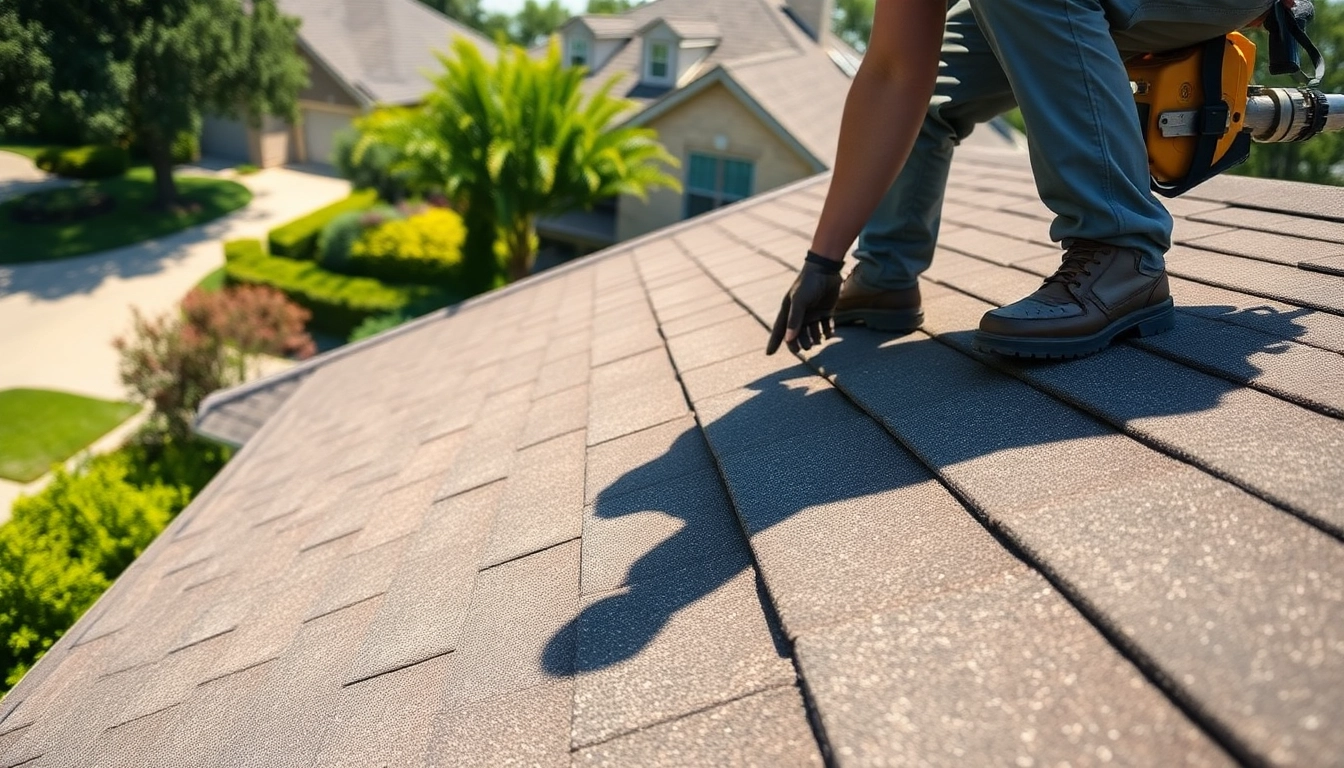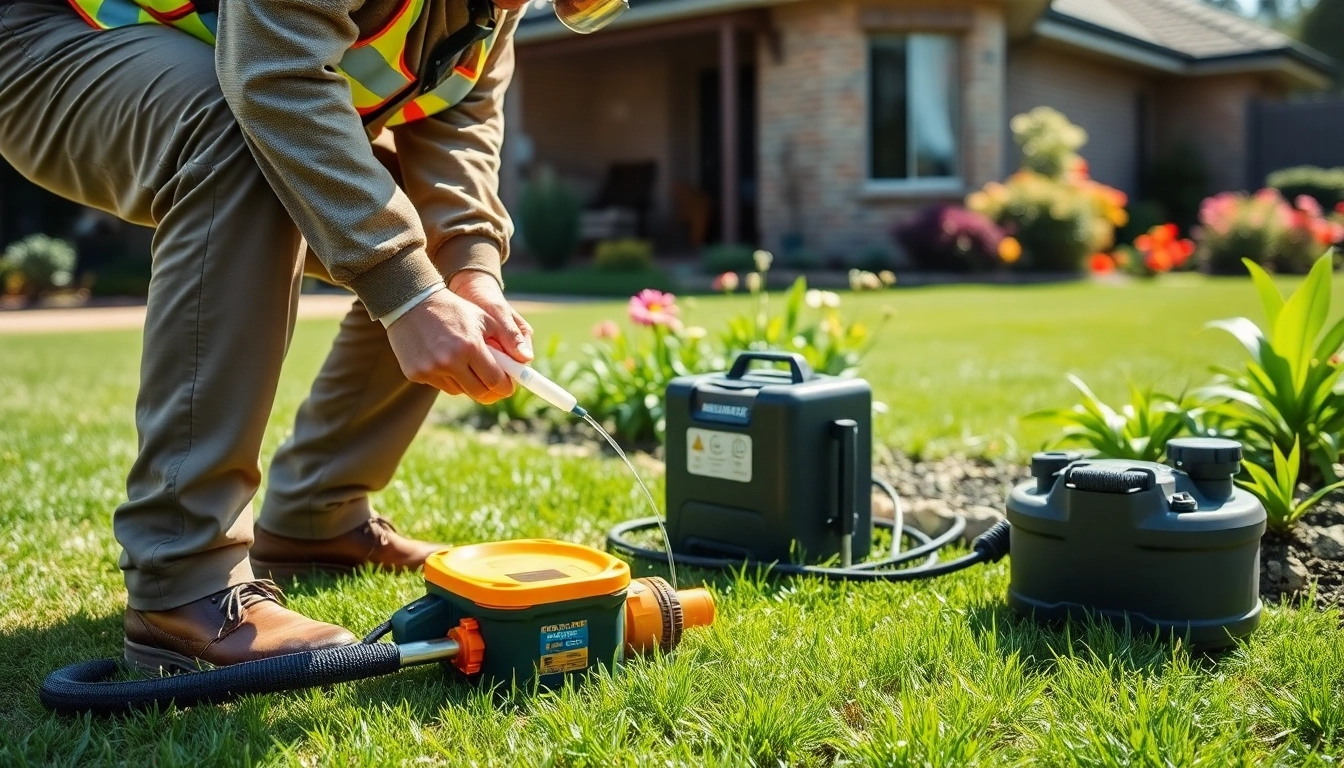Understanding Asphalt Shingle Roofing
What Are Asphalt Shingles?
Asphalt shingles are a type of roofing material made from a base of fiberglass or organic felt that is coated with asphalt and topped with granules for protection and aesthetic appeal. They are the most popular roofing choice in the United States due to their inexpensive nature, ease of installation, and versatile styles. Primarily used in residential roofing, asphalt shingles can be categorized into two types: three-tab shingles and architectural shingles. Each type serves to fulfill varying visual and performance requirements.
Types of Asphalt Shingles
There are primarily two types of asphalt shingles available on the market:
- Three-tab shingles: These are the most economical option and feature a flat, uniform appearance. They have a shorter lifespan compared to other options, typically lasting 15 to 20 years.
- Architectural shingles: Also known as dimensional shingles, these offer a thicker, layered look imitating the appearance of wood shakes or slate. They are more durable and can last between 25 to 30 years or more, making them a wise investment for homeowners.
In Texas, where the weather conditions can be extreme, architectural shingles are often recommended due to their enhanced durability and aesthetic appeal. Owners may also find luxury shingles that provide superior performance and a high-end look.
Benefits of Asphalt Shingle Roofing
The benefits of asphalt shingle roofing extend beyond their initial cost advantages. Key attributes include:
- Cost-effective: Compared to other roofing materials, asphalt shingles are generally more affordable, providing a great option for homeowners looking to stay within budget.
- Diversity of Design: Asphalt shingles come in a wide range of colors, styles, and textures, allowing homeowners to choose the best fit for their home’s exterior aesthetic.
- Ease of Installation: They are lightweight and can be installed quickly, which saves on labor costs and minimizes disruption.
- Relatively Low Maintenance: With proper care, asphalt shingles do not require extensive maintenance, making them easy to manage for homeowners.
- Fire Resistance: Most asphalt shingles come with a fire-resistance rating, offering an additional layer of safety.
Why Choose Asphalt Shingle Roofing for Texas Homes
Durability Against Texas Weather
The Texas climate poses unique challenges for roofing materials. Asphalt shingles, particularly higher-end architectural styles, are engineered to withstand extreme heat, heavy rain, and occasional hail. Their granulated surface helps protect against UV rays, reducing the likelihood of blistering or fading. When installed properly, they can provide effective insulation and help lower energy costs by maintaining a stable indoor temperature.
Cost-Effectiveness and Value
With an initial lower cost than many other roofing materials, asphalt shingles offer significant value. For Texas homeowners, the long-term performance, durability, and minimal maintenance costs make them an economically sound choice. Additionally, some manufacturers provide warranties that can last for decades, ensuring peace of mind for homeowners regarding their investment in roof repairs or replacements.
Energy Efficiency Features
Modern asphalt shingles often have reflective properties that can contribute to energy efficiency in homes. They can help manage heat gain in warmer months, potentially lowering air conditioning costs. Some types even receive ENERGY STAR certification, indicating their effectiveness in improving a home’s energy efficiency.This feature makes asphalt shingle roofing Texas an appealing choice for environmentally conscious homeowners.
Installation Process of Asphalt Shingle Roofing
Preparing Your Home for Installation
Preparation is crucial for a successful asphalt shingle roofing installation. Homeowners should begin by ensuring that their attic is adequately ventilated. This promotes airflow and reduces moisture buildup, which can damage roofs over time. It’s also advisable to remove any old roofing materials or inspect them for damage before proceeding with new installations. Setting up scaffolding and ensuring the area is clear of obstacles will provide a safe working environment for contractors.
Steps in the Installation Process
The installation process for asphalt shingles typically involves the following steps:
- Inspection: A thorough inspection of the roof’s framework, decking condition, and ventilation system.
- Underlayment Installation: Installing an underlayment to add an additional moisture barrier beneath the shingles.
- Shingle Installation: Beginning with the bottom row and working upward, installing shingles in overlapping layers to prevent water from seeping beneath.
- Ridge Cap Installation: Topping the roof with ridge cap shingles to provide a finished and weathertight edge.
- Final Inspection: Conducting a final walk-through to ensure quality and adherence to standards.
Post-Installation Care and Maintenance
Once your asphalt shingle roof is installed, regular maintenance is essential to prolong its lifespan. This includes:
- Inspecting the roof for debris and removing leaves and branches that can hold moisture.
- Checking for missing or damaged shingles after severe weather events.
- Maintaining proper attic ventilation to prevent moisture buildup.
- Cleaning gutters and downspouts to ensure proper drainage.
Schedule inspections every few years to catch potential issues before they escalate into costly repairs.
Common Issues and Solutions for Asphalt Shingle Roofing
Identifying Common Problems
Despite their durability, asphalt shingles are not immune to damage. Common issues may include:
- Granule Loss: Aging shingles may lose their granules, leading to decreased protection from UV rays and moisture.
- Cracking and Curling: Shingles may crack or curl from extreme heat or improper installation.
- Leaky Roofs: Caused by improper installation, insufficient flashing, or age-related wear.
- Moss and Algae Growth: This can occur in shaded areas and can retain moisture, leading to further damage.
Repairing Damaged Shingles
Repairing issues with asphalt shingles generally involves:
- Replacing missing or damaged shingles promptly to prevent further leaks.
- Applying roofing sealant around flashing and joints to enhance waterproofing.
- Cleaning the surface to remove debris and prevent moss buildup. Homeowners often use a mixture of water and bleach to target algae.
Consulting with an experienced roofing contractor can ensure that repairs are done effectively and safely.
When to Replace Your Roof
Understanding when it’s time for full roof replacement can save homeowners from extensive damage and costs. Signs that indicate it’s time to replace your asphalt shingle roof include:
- Constant shingle repairs that exceed the cost of a new roof.
- Visible daylight through roof boards, indicating severe wear.
- Significant granule loss, evidenced by granules in gutters.
- Shingle age surpassing 20-30 years, depending on shingle type.
A professional roofing contractor can assess the roof’s condition and provide recommendations based on factors specific to your circumstances.
Selecting the Right Contractor for Your Asphalt Shingle Roofing
What to Look for in a Roofing Contractor
Choosing the right contractor is essential for the successful installation or repair of asphalt shingle roofing. Key factors to consider include:
- Experience and Reputation: Look for contractors with a proven track record in the industry and good customer reviews.
- Licensing and Insurance: Ensure that the contractor carries appropriate licenses and insurance to protect against potential liabilities.
- Warranties: Ask about the warranties they offer on both materials and workmanship.
Questions to Ask Before Hiring
Before finalizing a contractor, ask specific questions to gauge their suitability:
- What is your experience with asphalt shingle roofing?
- How do you handle weather-related delays during the installation?
- Can you provide references from recent clients?
- What types of shingles do you recommend, and why?
These questions will help ensure that you make an informed decision based on the contractor’s knowledge and suitability for your project.
Evaluating Quotes and Estimates
When comparing estimates from different contractors, consider the following:
- Ensure that all quotes include the same type of materials and scope of work.
- Look for transparency regarding labor costs, material costs, and potential additional charges.
- Beware of significantly low bids that may indicate subpar materials or workmanship.
Choosing a contractor should involve balanced consideration between cost and quality; the cheapest option may not always yield the best results.



